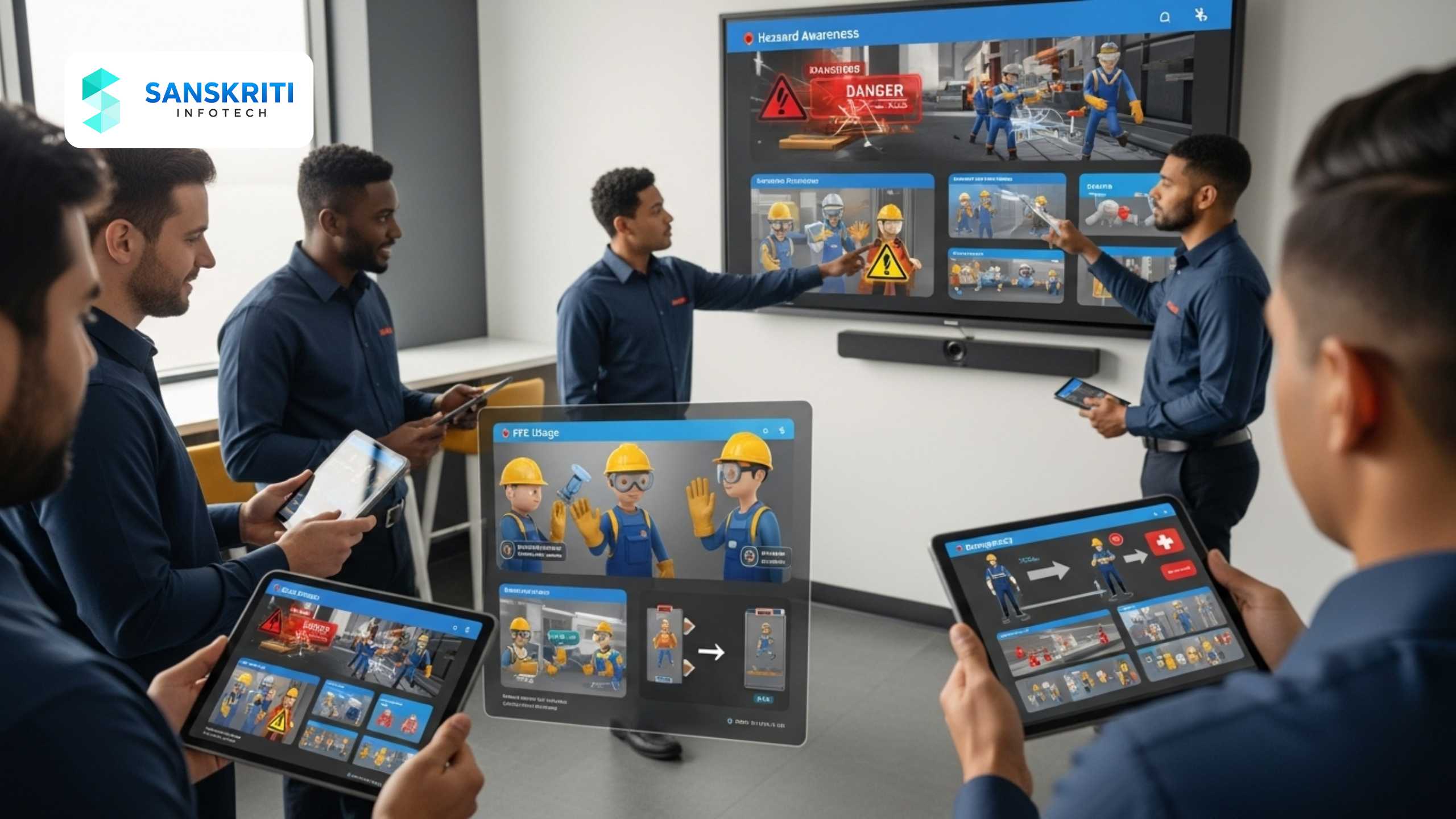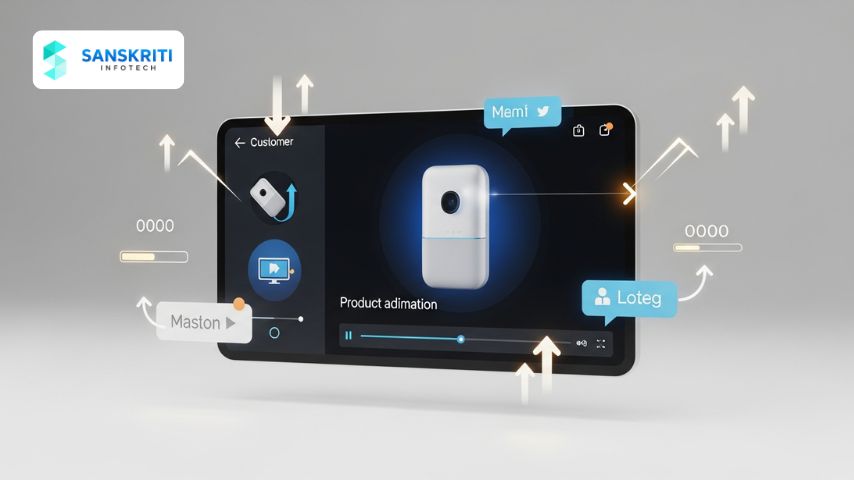Table of Contents
Introduction
When it comes to safety induction training, first impressions matter. New employees and contractors must quickly understand your site’s safety rules, hazards, and emergency procedures. But traditional methods like PowerPoint slides, printed manuals, or in-person sessions often result in low engagement and poor retention.
Enter 3D explainer videos—a visual-first approach that transforms static content into engaging, site-specific induction experiences. Whether you’re onboarding factory workers, contractors, or office staff, 3D animation simplifies complex safety instructions and accelerates learning.
This blog explores how 3D animation fast-tracks induction while boosting compliance, engagement, and employee retention across industries.
The Pitfalls of Traditional Safety Induction
Most companies still rely on outdated induction formats:
- Overloaded presentations with text-heavy slides
- Generic stock images that don’t reflect the real site
- One-way delivery without interactivity
- Inconsistent delivery by different trainers
These methods fail to communicate safety protocols effectively, often causing confusion, disengagement, and avoidable incidents.
In fact, studies by OSHA Safety and Health Topics – Training and others suggest that static safety training formats result in as low as 10–15% information retention after one week. When employees forget safety protocols, the risk of workplace injuries, compliance violations, and downtime increases dramatically.
What Makes 3D Explainer Videos More Effective?
3D animated safety induction videos provide a visual, immersive format that brings your real-world worksite into the screen. Here’s how they transform training:
- Site-specific environments: Model your actual facility layout, equipment, and hazards
- Realistic simulations: Show cause-effect scenarios like spills, lockout/tagout, and fire response
- Multilingual narration and captions: Cater to diverse workforces
- Consistency: Every worker receives the same high-quality message
- Higher retention: Visual memory and spatial learning boost recall
The brain processes visuals 60,000 times faster than text, and visuals improve learning retention by up to 400%. With this cognitive advantage, 3D videos make critical safety instructions easier to grasp, especially for workers with limited language proficiency or literacy challenges. Learn more via NIOSH – Training Through Technology.
Speed Up Onboarding While Improving Compliance
Fast-tracking induction doesn’t mean cutting corners. With 3D videos:
- New hires get oriented faster, even before stepping on-site
- Contractors and vendors can complete induction remotely
- Training is always audit-ready and trackable via your LMS
- You eliminate scheduling bottlenecks of live sessions
- Consistent training lowers liability and improves compliance readiness
According to Safeopedia – Safety Induction Guide, a modernized induction program can reduce incident rates during the first 90 days by over 40%. Automated tracking ensures your workforce remains compliant and your training records are always ready for audits and inspections.
Versatile Applications Across Industries
3D safety induction videos are highly adaptable across sectors. Common industry-specific applications include:
Manufacturing
- Show machinery operations, maintenance zones, and PPE rules
- Explain shift protocols, hazard zones, and quality control checkpoints
Construction
- Virtual walkthroughs of project sites and excavation areas
- Highlight barricades, overhead risks, and scaffold usage
Oil & Gas
- Simulate permit-to-work systems, confined space entries, and fire safety drills
- Detail emergency shutdown systems and chemical hazard zones
Pharmaceutical & Chemical
- Reinforce contamination control protocols and cleanroom behavior
- Demonstrate hazardous material storage, ventilation, and PPE compliance
Logistics & Warehousing
- Walk through forklift lanes, racking safety, and manual handling techniques
- Show evacuation routes, fire exits, and loading dock operations
With precise modeling and contextual storytelling, each video becomes a digital twin of the actual workplace—minimizing uncertainty and maximizing preparedness.
Microlearning with 3D Animation: A Smart Combo
Microlearning—short, focused training bursts—is ideal for today’s time-constrained workforce. 3D animated microlearning can:
- Segment induction into digestible 3–5 minute chapters
- Focus each module on one key hazard or SOP
- Include interactive decision points for deeper understanding
- Allow self-paced learning on mobile devices or LMS portals
This flexibility boosts engagement and accommodates different learning styles. Even veteran employees benefit from micro modules as quick refreshers.
The Business Case: ROI of 3D Safety Induction
3D explainer videos are not just an innovation—they’re a proven business asset. Companies that invest in them report:
- Reduced onboarding time: Up to 60% faster compared to instructor-led sessions
- Fewer incidents: 30–50% drop in near misses and first-90-day injuries
- Lower training costs: Eliminate travel, printed materials, and facilitator fees
- Audit readiness: Always-available records for regulators and insurers
- Improved brand perception: Employees and visitors feel welcomed and valued
Refer to EHS Today – Training Modernization for deeper insights on the measurable impact of visual training.
How to Develop High-Impact 3D Safety Induction Videos
To make the most of your investment, follow these best practices:
- Start with real data: Use past incident reports, compliance gaps, and floor layouts
- Create an intuitive script: Avoid jargon; explain terms visually
- Highlight common errors: Demonstrate the right and wrong way to perform tasks
- Use branded characters and environments: Build familiarity and reinforce company culture
- Include emergency procedures: Clearly show exits, alarms, fire extinguishers, and assembly points
- Keep it short and sharp: Aim for 5–10 minutes per topic
- Embed assessments: Add quizzes or knowledge checks to verify learning
Collaborating with experts like Sanskriti Infotech ensures your 3D videos are technically accurate, industry-compliant, and professionally narrated.
Real-World Success Stories
Manufacturing Client: India
A large automotive parts manufacturer replaced its outdated classroom training with 3D animated site walkthroughs and machine operation modules. Result:
- 50% reduction in training duration
- 35% fewer first-month injuries
Oil & Gas Client: Middle East
An offshore drilling company implemented 3D induction for high-risk areas and SOPs.
- 70% increase in contractor compliance
- Reduced language barrier issues with multilingual captions
Logistics Company: Europe
Warehousing safety improved after the introduction of animated forklift traffic simulations and loading dock procedures.
- 45% fewer incidents involving powered vehicles
- Enhanced contractor readiness before site visits
Conclusion
Modern safety induction needs to be fast, flexible, and effective. 3D explainer videos are not just eye-catching—they’re a practical solution for improving compliance, reducing incident rates, and speeding up the onboarding process.
Whether you manage a hazardous plant, fast-paced warehouse, or construction site, animated induction videos allow you to deliver standardized, engaging, and impactful training that protects lives and assets.
If you’re ready to replace dry induction decks with dynamic, memorable training content, 3D animation is your next best move.






